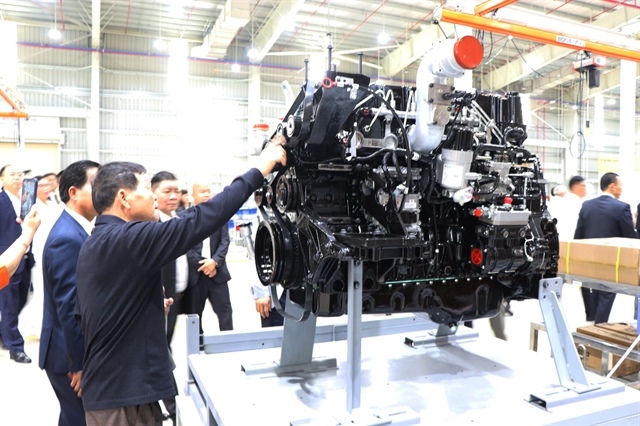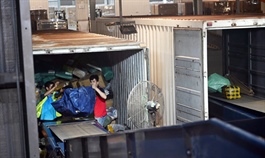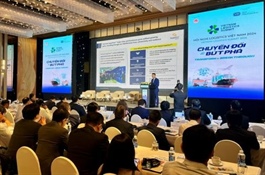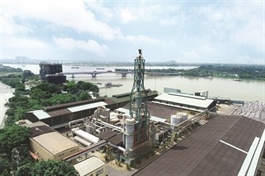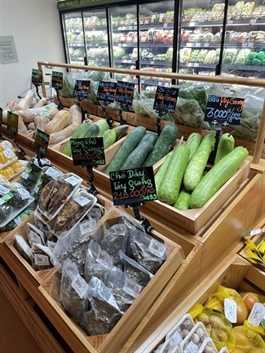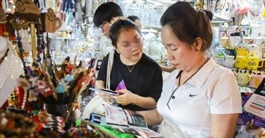Hanoi develops quality farming models
Hanoi develops quality farming models
Agricultural extension in the city continues to face challenges, including the adverse effects of climate change and the complex disease situation affecting crops and livestock.
Hanoi has been working with other localities to develop agricultural extension models in crop, livestock and aquaculture, focusing on large-scale, high-yield, high-quality production to boost local incomes.
Vu Thi Huong, Director of the Hanoi Agricultural Extension Center (Department of Agriculture and Rural Development), explained the city's efforts to build quality agricultural models in an interview with Hanoimoi Newspaper.
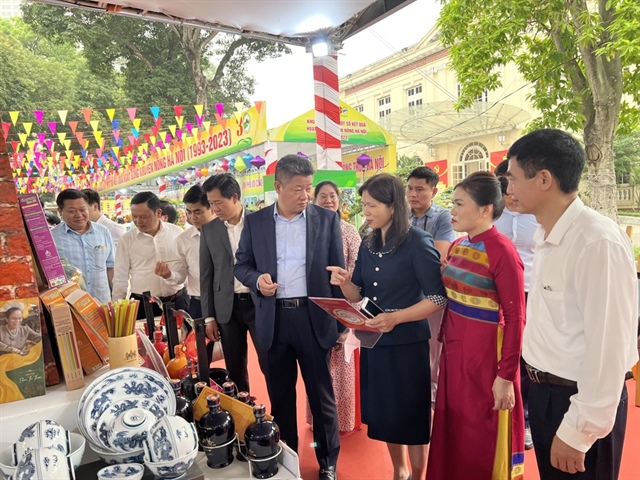
Nguyen Manh Quyen, Deputy Chairman of the Hanoi People's Committee, and delegates at the 2023 Agricultural Extension Exhibition. Photos: Anh Ngoc/The Hanoi Times |
What models does Hanoi have in place to support farmers in agriculture?
Since the beginning of the year, the capital has been rolling out various agricultural extension models in crop and livestock production according to planned schedules. Crops have shown strong growth, with high productivity and quality.
In crop production, Hanoi has successfully launched 18 extension models, most notably the VietGAP quality rice production model with two harvests on 100 hectares. Of these, the spring crop is planted on 50 hectares, using TBR225 rice (with bacterial leaf blight resistance) and HD11, grown using tray sowing and mechanical planting.
Households in the model received technical training in VietGAP production processes, switched from traditional to safer production methods, and secured a market for their produce by signing contracts with companies. Yields reached 60-69.4 quintals per hectare, 10-20% higher than with traditional methods. Meanwhile, the summer crop, planted on 50 hectares and using varieties such as TBR225, HD11 and Golden Flower Sticky Rice, resulted in significant economic benefits.
In the fruit sector, a prominent model is the VietGAP-compliant pomelo production, which covers more than 19.7 hectares of Dien pomelo varieties. Farmers have been trained to follow the VietGAP production process and to keep detailed production logs. Soil and water samples tested at the model sites were well within the required limits, ensuring compliance with VietGAP standards.
There is also a new lotus cultivation model linked to the development of ecotourism aiming to adapt to climate change. This model covers 17 hectares with varieties that allow both flower and seed harvesting. These new lotus varieties are thriving, producing beautiful and long-lasting flowers that attract many visitors for sightseeing and photography.
How are the livestock and aquaculture models being carried out?
Hanoi has partnered with localities to implement seven livestock and aquaculture models according to established plans and seasonal frameworks, with one model in its second year. So far, the livestock has shown robust growth, with no disease outbreaks reported.
An example is the Zebu cow breeding model implemented in 2023-2024 and raised 170 cows. The city has also introduced breeding stock to grazing areas and key livestock regions and used artificial insemination to crossbreed with 3B beef cattle to increase both the number of breeding cows and meat production.
The city is also supporting farmers to raise 15,000 hybrid-colored broilers using a VietGAP-compliant model. Farmers receive guidance on biosecurity practices and are certified as VietGAP compliant if they meet quality standards. The chickens are reported to be healthy, with a survival rate of 97% and an average weight of 550-570 grams each.
A 25-hectare VietGAP aquaculture model has also been established, stocking 225,000 V1 carp and 150,000 tilapia. The fish grow uniformly, with both carp and tilapia reaching weights of 640-660 grams each.
What are the challenges facing agricultural extension and model development?
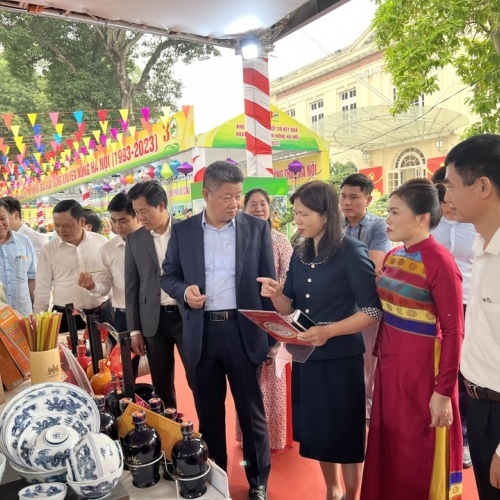
The pomfret fish farming model in Dai Ang Commune, Thanh Tri District |
We continue to face a number of challenges in our agricultural extension work, including the adverse effects of climate change and the complex disease situation affecting crops and livestock.
In particular, the recent Typhoon No. 3 has hurt the yield and productivity of several models, while other crops have been delayed due to heavy rains.
Moreover, the instability of agricultural prices and input costs has a direct impact on agricultural production and the implementation of extension models.
What are the solutions for sustainable, modern agricultural development?
I believe the capital needs a comprehensive plan of action. This includes timely planting to take advantage of favorable weather, replanting medicinal herbs, taking care of damaged areas, and adapting production processes to actual conditions.
The Center is working with relevant agencies to provide guidance to local farms and households on effective crop, livestock and aquaculture care and pest management to ensure compliance with technical standards and food safety. Increased monitoring of fields, orchards and livestock facilities will also be prioritized.
Stakeholders will need to effectively forecast, detect early and respond immediately to any signs of disease in crops, livestock and aquaculture. Proactive measures to mitigate the effects of storms and heavy rains will be essential through the end of the year.
Besides, the Agricultural Extension Center will evaluate and summarize the remaining models and continue to support the breeding of 40 cows in 2024-2025. We will also provide support in terms of breeds and materials for herd management models.
We will work with international organizations, such as the Japan International Cooperation Agency (JICA), to enhance the agricultural value chain and increase farmers' incomes.
Thank you for your time.


